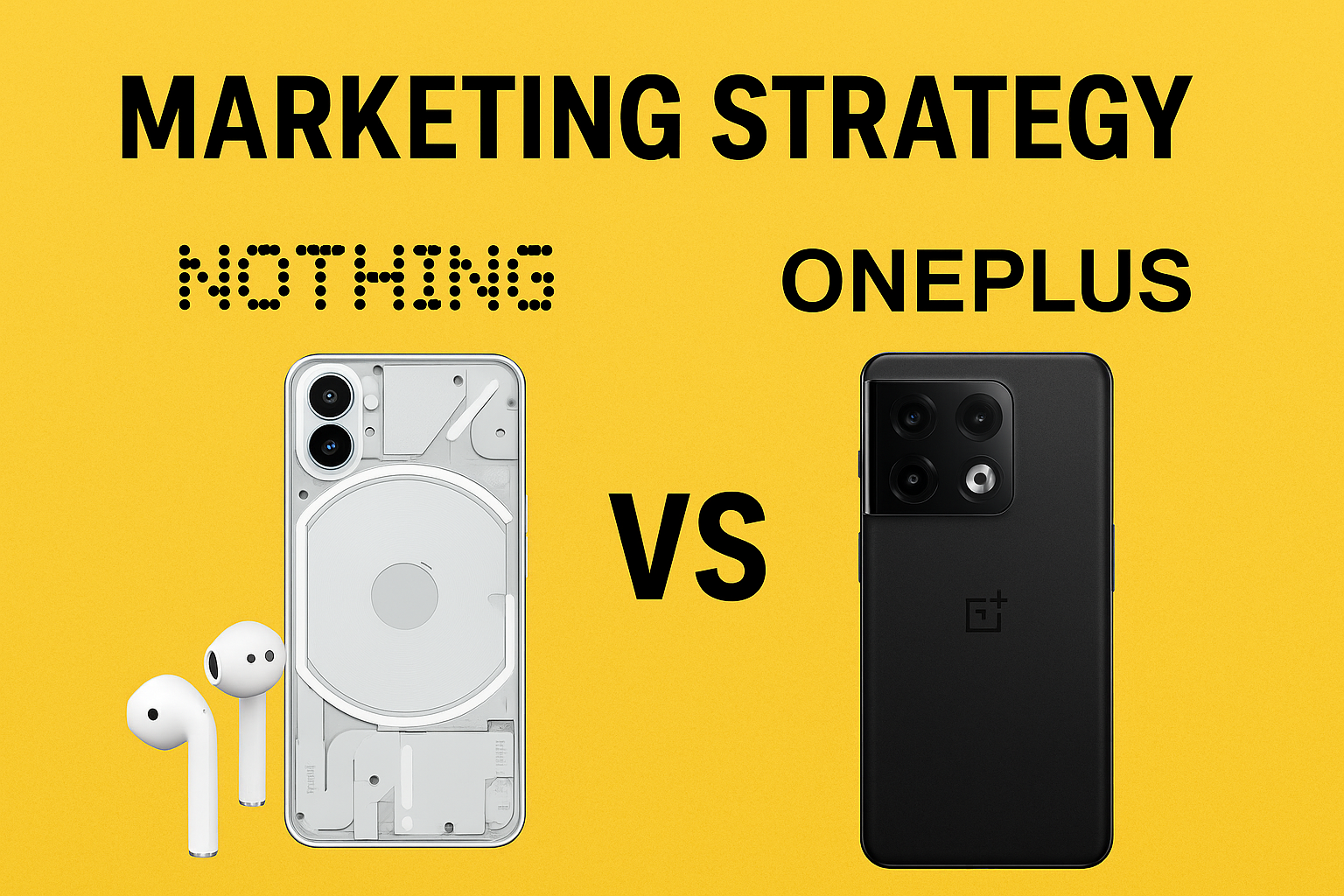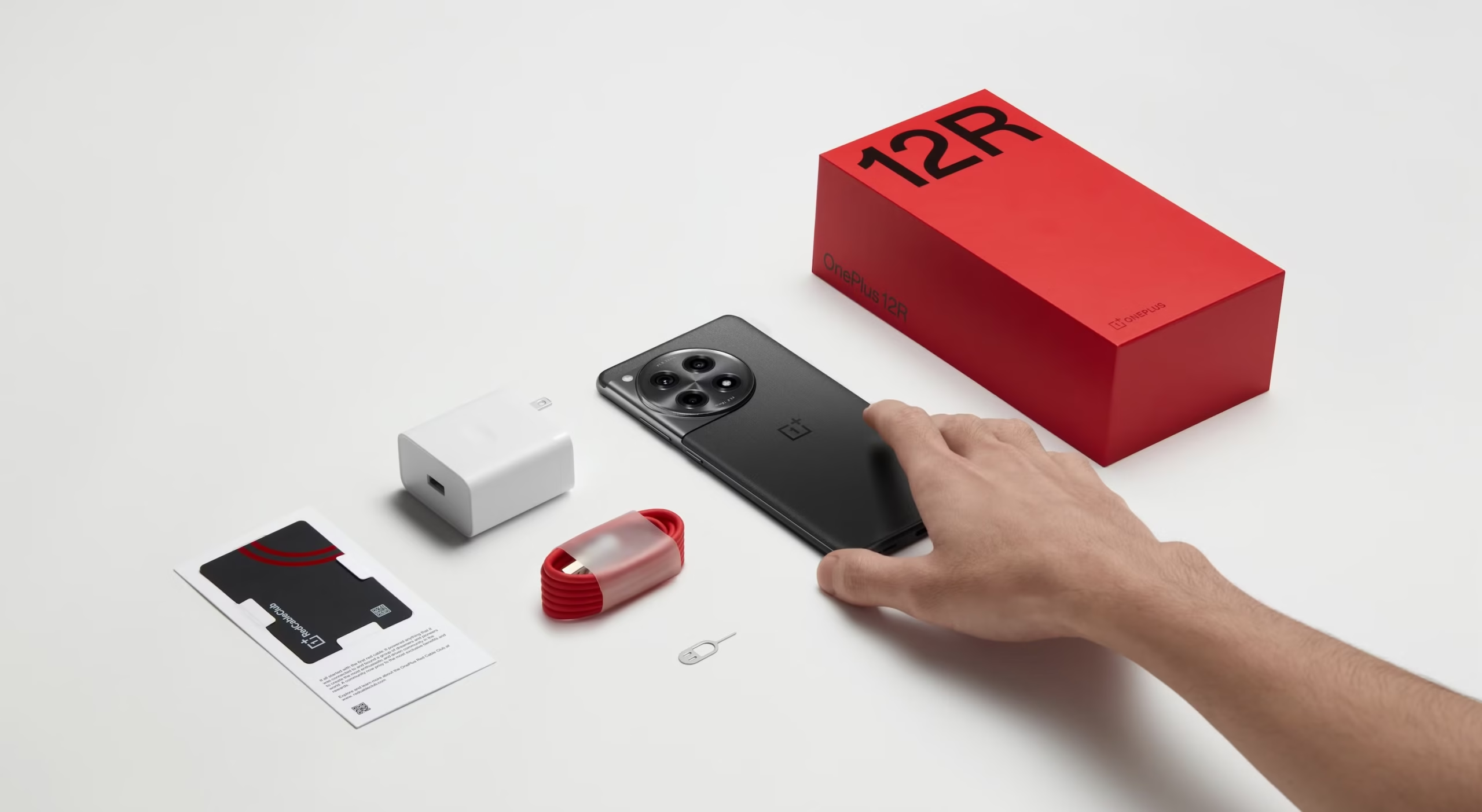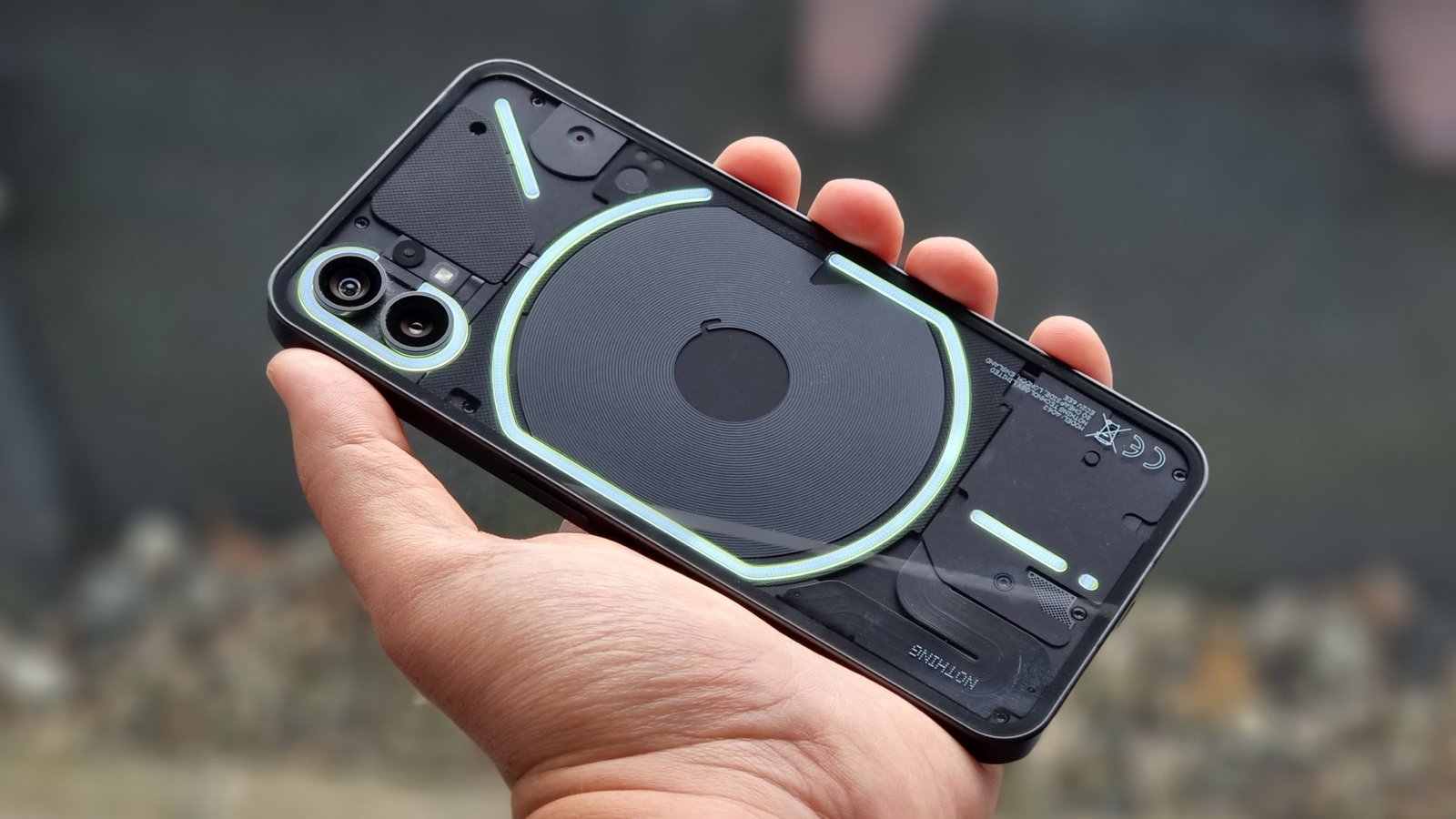
In today’s smartphone market, the specs sheet is no longer the real battleground. Cameras get better every year, processors get faster, and everyone promises “all-day battery life.” The real war is being fought in how brands make you feel about owning their devices.
Two players doing this exceptionally well are OnePlus and Nothing. OnePlus came swinging in 2014, calling itself the “flagship killer” and making the big guys sweat. Nothing, the new kid led by OnePlus co-founder Carl Pei, decided to skip the spec-sheet shouting match and instead make phones that look like they belong in an art gallery.
Like a clever digital marketing agency that knows exactly how to turn a brand into a cult, both have built identities that go way beyond the products in their boxes. They’re selling stories, communities and, let’s be honest, a little bit of bragging rights.
Let’s unpack how these two brands are playing the marketing game, what they’re doing differently, and what other brands can learn from their contrasting approaches.
Table of contents
- Origins & Brand DNA
- Launch Mechanics & Buzz
- Visual Identity & Messaging
- Community Building & Engagement
- Partnerships & Ambassador Moves
- Media Channels & Communication Style
- Positioning & Pricing Strategy
- Key Takeaways & Future Outlook
- Concluding thoughts…
- Frequently Asked Questions
Origins & Brand DNA
OnePlus: The original troublemaker

Back in 2014, OnePlus walked into a market dominated by the likes of Apple and Samsung, wearing a hoodie and carrying a slingshot. Their pitch was simple: premium features at a price that wouldn’t break the bank. They launched with an invite-only sales model that instantly made every phone feel like a backstage pass. Forums became their playground, and Never Settle wasn’t just a tagline, but a manifesto. Over time, the rebel matured, moving from pure value to a more premium play, but always keeping that confident edge.
Nothing: Disruption with a designer label

Fast forward to 2021, and Carl Pei, now running his own show, decided the world didn’t need another generic rectangle with a glossy back. Nothing’s first move? Don’t show the product at all. Just hints, whispers, and cryptic visuals that looked more like fashion campaign teasers than tech ads. When the phones finally arrived, they had transparent backs, quirky LED patterns, and the kind of visual identity you’d expect from a design studio rather than a hardware manufacturer. Nothing’s DNA is equal parts aesthetic statement, anti-corporate cool, and a touch of “if you understand the aesthetic, you’re already sold.”
In essence, OnePlus built its foundation on performance metrics and community engagement, while Nothing anchored itself in design philosophy and cultural relevance. Both have very different blueprints, but they’re playing in the same league.
Launch Mechanics & Buzz
OnePlus
OnePlus launches are staged events. The early invite-only system was psychology 101. By making the phone feel hard to get, they made everyone want one. Their launches were part tech showcase, part fan festival, complete with livestreams, forum chatter, and enough hype to make even non-techies curious. The OnePlus One launch in 2014 created a frenzy online with people competing for invites. The OnePlus 6T launch in New York had a massive live audience. Over time, they removed the invites, but the big reveal energy stayed. Today, OnePlus product drops still feel like events worth marking on the calendar, with influencer hands-on videos flooding YouTube within hours.
Nothing: The art of the tease
Nothing builds anticipation in a highly visual way. Their pre-launch campaigns often feature minimalist posters, mysterious symbols, and Carl Pei sharing photos that spark speculation. The launch of the Nothing Phone (1) included cryptic images of the phone’s LED light patterns and close-up design shots, released slowly over weeks. Product reveals are clean and cinematic, with intentional pacing and white space. The Nothing Ear (2) launch followed a similar pattern, with each detail shared in small doses, making every update part of the conversation online. If OnePlus is about getting the biggest crowd to show up at the gate, Nothing is about having people queue outside just to peek through the window.
Visual Identity & Messaging
OnePlus: Sleek confidence with a tech-first heart

From day one, OnePlus has leaned into a clean, modern aesthetic with bold typography, high-contrast visuals, and that unmistakable pop of red. Their ads talk performance first, everything else second. You’ll see phrases like “Smooth Beyond Belief” or “Ultra Stops at Nothing,” paired with slow-motion shots of sleek hardware and high-speed animations that scream power. Even when they collaborate with Hasselblad, the visual language is sharp, professional, and unmistakably premium.
Nothing: Minimalism with a wink

Nothing’s branding feels like the love child of a design museum and a fashion editorial. Transparent hardware, playful typography that looks like it wandered out of a typewriter, and product shots against stark backgrounds that make the devices feel like limited-edition art pieces. Their campaigns don’t shout specs, but whisper personality. Even the product names are cheekily simple: Phone (1), Ear (2), CMF Buds Pro. It’s the opposite of feature-cramming, and it works because it feels like they’re in on a joke that other tech brands missed.
Community Building & Engagement
OnePlus: The original forum fam
Before “community” became a buzzword, OnePlus was already building one. Their forums were more than just places for troubleshooting—they were spaces where fans swapped tips, shared photos, beta-tested software, and debated every little design decision. They hosted fan events, meetups, and even let community members influence product features.
The evolution of this approach is best seen in their Red Cable Club, a tiered loyalty program that turns customers into brand evangelists. Members earn “Red Experience Points” through purchases and engagement, unlocking everything from exclusive discounts to offline experiences and birthday gifts. The program has four tiers (Explorer, Insider, Elite, and Maestro), each offering increasing benefits and making members feel genuinely valued.
Nothing: Co-creation and candidness
Nothing’s community strategy feels more like hanging out with a creative collective. They openly share design prototypes, run early access programs, and actively engage with feedback in real time. Their CEO, Carl Pei, treats Twitter like a live Q&A session, unfiltered, sometimes cheeky, but always human.
The Phone (2) camera is turning out to be pretty good. Other brands use pro photographers or even pretend DSLR photos are shot on phones.
To keep things real, I encourage everyone testing the Phone (2) to share unfiltered images right now.
I'll go first. #NothingPhone2 pic.twitter.com/cEUQaFlkPq
— Carl Pei (@getpeid) July 3, 2023
This transparency makes fans feel like they’re part of the build process, not just the target audience. It’s the kind of access you rarely see in consumer tech, and it’s earned them a fiercely loyal base despite being a young brand.
If OnePlus built a community that rallies around shared ideals, Nothing built one that rallies around a shared process. One thrives on tradition, the other on spontaneity.
Partnerships & Ambassador Moves
OnePlus: Big names, big moves

OnePlus has never been shy about borrowing credibility from the best. The Hasselblad partnership was a masterstroke, instantly giving their cameras pro-level prestige even before users took a single photo. They’ve tapped celebrity ambassadors, teamed up with e-sports organisations, and even partnered with McLaren for special edition devices. These collaborations signal that OnePlus isn’t just for tech geeks anymore—it’s for anyone who wants their phone to come with bragging rights.
Nothing: Playing in culture, not just commerce
Nothing’s partnerships feel more like cultural alignments than corporate deals. Their CMF sub-brand (Colour, Material, Finish) extends their design-first philosophy into accessories, building a lifestyle ecosystem without calling it that. They’ve collaborated with niche creators, design influencers, and music personalities, keeping their brand in spaces where it feels cool by association. It’s less about celebrity endorsements and more about being part of the right conversations in art, music, and design circles.
OnePlus aims for authority through partnerships. Nothing aims for authenticity. Both are valid plays—they just live in different corners of the influence map.
Media Channels & Communication Style
OnePlus: The multi-platform operator
OnePlus plays the media game like a well-drilled campaign. Big-budget launch events like the OnePlus 12 global launch livestream, YouTube influencer blitzes featuring creators like Marques Brownlee, targeted social ads and polished product videos that wouldn’t feel out of place in a cinema pre-roll.
They invest in outdoor ads like massive Times Square billboards, sponsor tech shows and even run television spots in some markets. Their communication style is confident, feature-driven, and often anchored in proof points. It’s the kind of marketing that says, “Here’s why we’re better, and here’s the evidence.“
Nothing: Native to the scroll
Nothing is almost allergic to traditional ads. Their marketing lives where their audience already is: Instagram reels, Twitter threads, TikTok snippets, and visually satisfying YouTube shorts. The content feels personal, like something you’d stumble on in your feed rather than a paid placement.
Carl Pei himself is one of their most effective “channels,” sharing behind-the-scenes moments, poking fun at industry trends, and creating the sense that you’re in on the conversation. The tone is conversational, almost casual, but strategically so.
If OnePlus is the polished press conference, Nothing is the cool conversation at the afterparty.
Positioning & Pricing Strategy
OnePlus: From disruptor to premium player
When OnePlus first launched, they were the “flagship killer,” undercutting the likes of Samsung and Apple by hundreds of dollars while matching most of their performance. That positioning was gold for early adopters who wanted power without the price tag. Over time, though, OnePlus moved upmarket. Prices climbed, features expanded, and the brand began competing head-to-head with the very flagships it once aimed to dethrone. Today, their portfolio balances premium models for the tech-obsessed with Nord devices for the value-conscious, giving them reach across multiple price tiers.
Nothing: Premium, but not mainstream premium
Nothing stepped in with a more focused approach: look and feel like a premium brand, but avoid being swallowed by the spec war. Their prices are high enough to communicate quality, but low enough to tempt buyers who might otherwise stick with a mid-tier device. By keeping their product line lean—just a couple of core models and accessories—they can pour all their marketing into making each one feel special. This makes their phones aspirational, but still within reach for their target audience.
OnePlus sells power at every price. Nothing sells design-led exclusivity at an accessible premium.
Key Takeaways & Future Outlook
When you strip away the specs and sales charts, OnePlus and Nothing are playing two very different long games.
OnePlus has evolved from the scrappy rebel to an established premium brand without completely losing its community-first roots. They’ve proven they can adapt, scale, and still rally fans around each new launch, even if they’ve traded some of that early underground cool for mainstream polish.
Nothing, on the other hand, is still in the pure storytelling phase. They’re building mythos, not just market share. With every cryptic teaser and design-led release, they’re cementing themselves as the brand for people who see their phone as part of their personal style. The challenge? Scaling that without becoming just another “big tech” player, they set out to be different from.
Looking ahead, OnePlus will likely keep broadening its range while doubling down on partnerships and performance bragging rights. Nothing will probably keep pushing the edges of design and brand culture, slowly expanding its portfolio while holding on to its “if you know, you know” charm.
Different strategies. Different audiences. But both prove that in today’s market, how you tell your story matters just as much as the phone in your hand.
Concluding thoughts…
OnePlus and Nothing’s marketing strategies are a masterclass in how two brands can thrive by playing entirely different games.
OnePlus leans on performance, partnerships, and a polished global presence. Its McLaren edition phones, global sports tie-ups, and flagship killer positioning have built a strong reputation among performance-focused users.
Nothing bets on design, culture, and that elusive cool factor money can’t buy. From its transparent design language to limited-edition collaborations, it has made itself instantly recognisable.
In the end, it’s not about which brand wins—it’s about which story you choose to be part of. You and your brand, too, could get people invested in the story you wish to tell and rally them around like a thriving community. All you need is the backing of creative folks like the ones at Flora Fountain, an experienced branding agency in Ahmedabad with many homeruns and wins under its belt.
FAQs
Critical. In our scroll-heavy world, you have seconds to make an impression. Strong visual identity creates instant recognition and communicates your brand’s personality without words.



